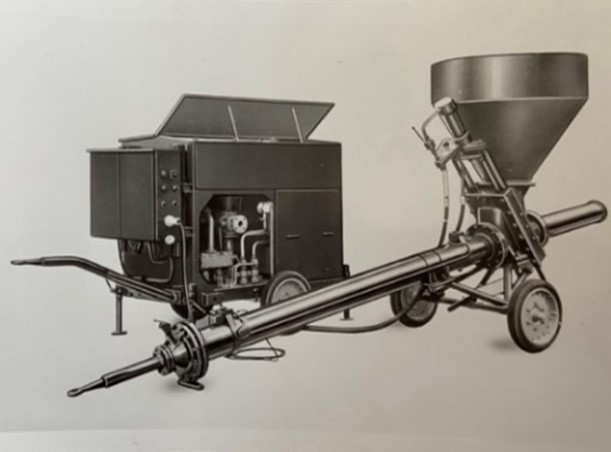60 Anniversary
Oct 6, 23
On 7 October 2023, we at Putzmeister Ibérica are celebrating the 60th anniversary of the commissioning of the first hydraulic concrete pump for our then customer Horminesa.

Torkret PK12
Putzmeister Ibérica, then called Induresa, distributed Torkret concrete pumps and Putzmeister mortar machines. It was Gerwald Lettner, with the help of a technician, who launched these first pumps on the Spanish market.
Gerwald Lettner started at Induresa in 1963 with a trainee contract, starting from the bottom, he had the vision of how these new technologies could help his customers in their construction processes. All these achievements led Gerwald to the management of Induresa, through the acquisition of Putzmeister and was able to bring it to the leading position in the mortar and pumped concrete sector.
This innovative technology has favoured the mechanisation and improvement of construction in Spain and it is an honour that Putzmeister Ibérica has been involved in this from the very beginning.
The pioneer in introducing this technology and these machines in Spain is Mr. Gerwald Lettner who is going to dedicate us a few words about this historical milestone.
This pump was electric and was used for pumping concrete in a building near the Cerro de los Ángeles in Madrid. This early commissioning was at the same time as another, perhaps more technically important, pumping at a considerable height and distance. We are talking about pumping with the hydraulic pump Torkret Pk 20 at the dam "salto del Torrejón" in the present-day Monfragüe National Park.
At that time, "pumpable" concrete was not known as such and was an additional problem to the purely physical process of transporting concrete. The client and the construction site had to be convinced of the concrete preparation requirements to be able to pump it.
In those early days, we had to accompany every machine we sold to explain in detail how it worked and also the requirements of the concrete to be pumped. It was a sale with intensive training in its use. Those were great days that were a mixture of hard times because of concrete jams and more joyful times when the pump was working properly.
Mr. Lettner, were you aware of the development of pumping and the impact on construction?
Yes, I saw a great development of both the pumping possibilities of the machine and the acceptance by builders, but I did not dream at that time of being able to achieve pumping records at heights such as the one in the Pyrenees at 432 m in 1984, or at distances of 1690 m in a water tunnel in Barcelona in 1991.
What expectations did the customer have of our machine?
His expectations were to pump any concrete, we had to convince him that this was not possible, that concrete required a number of conditions to be pumpable, such as sufficient fines and a suitable consistency, after convincing him of these requirements he realised the great advantages.